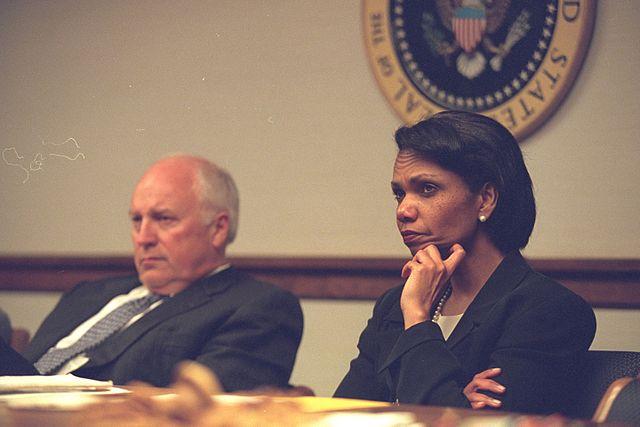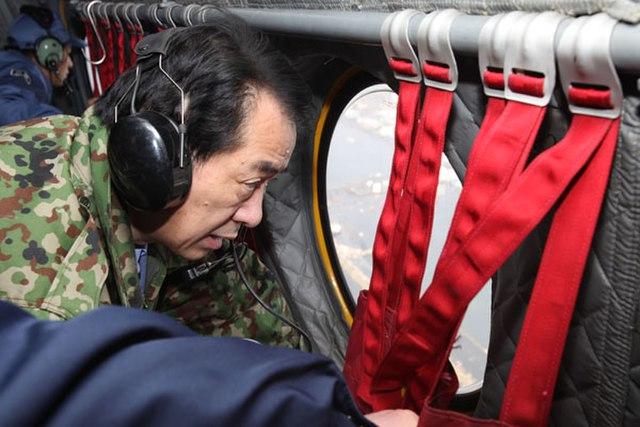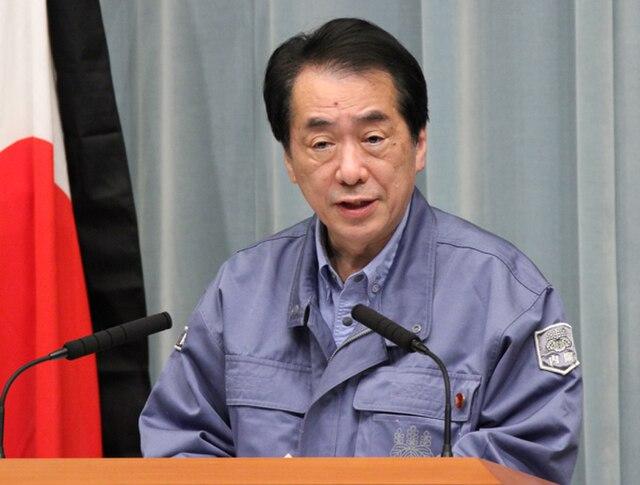For every week after an enormous earthquake hit northeastern Japan on March 11, 2011, the Japanese Prime Minister Kan Naoto slept in his workplace. As he was making an attempt to shut his eyes, photographs of the devastating tsunami and the escalating nuclear accident raced by way of his thoughts. Over the following days, as nuclear meltdown fears mounted and the potential for mass casualties loomed, Kan started to ponder evacuating all the Tokyo metropolitan space together with the Imperial Palace and state establishments. Regardless of the palpable sense of hazard, or maybe as a result of of it, he stored this apocalyptic situation for himself. “This case was so grave I felt I had to make use of the utmost discretion when placing it into phrases,” he wrote in his memoir “My Nuclear Nightmare: Main Japan by way of the Fukushima Catastrophe to a Nuclear-Free Future” (2017).
Kan’s recollections of the aftermath of the triple disasters include a couple of visceral descriptions of the hazards he felt throughout these dramatic days. And like different leaders who confronted grave hazard earlier than, his subjective account of what it felt prefer to expertise hazard is useful in gaining a vital perspective on leaders, risk notion, and worldwide relations. Over the previous years, I examined many such ‘danger-descriptions’ given by leaders embedded in numerous cultures and contexts. I learn memoirs written by leaders and their shut advisers, non-public letters leaders wrote to their colleagues or relations, diaries leaders stored whereas in workplace, in addition to memoranda of declassified conversations leaders held with their counterparts. Drawing on these hazard descriptions, in addition to on a singular framework to explain the expertise of language developed by Ray Jackendoff, I argue that leaders’ risk notion isn’t rooted in mere rational calculations of risk and dangers (capabilities and intentions, possibilities and penalties) nor in ideology or in discrete feelings like worry or nervousness. As an alternative, leaders’ risk notion is healthier described utilizing a set of psychological buildings which mix to create one’s “felt expertise.” And whereas the precise content material of the expertise of hazard may differ from one chief to a different and from one hazard to a different, leaders possible share the qualia of hazard expertise (i.e., the kinds through which consciousness presents itself: what this expertise is like) in addition to the construction of this expertise (the area of prospects ‘accessible’ for leaders when experiencing hazard).
Crucially, leaders’ expertise of hazard isn’t static and sometimes fluctuates as time unfolds. For instance, recalling the minutes and hours after the September 11 assaults, then Nationwide Safety Advisor Condoleezza Rice attests to a dynamic sense of hazard. Whereas she was ‘shaken’ to her ‘core’ within the speedy moments after she had realized a couple of second aircraft hitting the World Commerce Middle, for 2 days after 9/11 she operated in ‘a digital state of shock’, with feelings and a renewed sense of motion solely rising after she attended the Nationwide Day of Prayer and Remembrance service at Nationwide Cathedral. See Determine 1. Thus, and in distinction to most literature on risk notion, which assumes risk notion is a continuant entity that’s mounted, my level of departure is that leaders usually are not aware of all risks on a regular basis and that the identical risks don’t really feel the identical on a regular basis both. I’m subsequently interested by incorporating risk notion as-an-occurrent into our analyses, asking the way it feels for leaders to expertise hazard at a given second in time and what could be the implications of a specific expertise for belief-change, decision-making and disaster administration.
The query of how leaders understand/expertise safety risks is essential for theorists and practitioners of Worldwide Relations (IR) alike. Leaders’ perceptions and expertise matter in world politics, even when they don’t have full management over political outcomes all the time. Menace notion too is a vital component within the examine and apply of Worldwide Relations, enjoying an important position in theories of conflict, deterrence and compellence, alliances, and battle decision. And but underpinning our present understanding of leaders’ risk notion in IR is an incomplete notion of human decision-makers as (ir)rational data processors that pays no consideration to the position of expertise in developing a notion of hazard at a given second. Constructing on Alexander Wendt’s declare that ‘no mannequin of human beings is full that doesn’t have room for the expertise of being human, of what it’s prefer to be you or me’, I develop and illustrate a framework with which students can discover what it’s like for a frontrunner to expertise safety hazard at a given second, i.e. what it would really feel like for the chief, and the way such expertise is organised within the minds of leaders.
Past Rationality and psychology
For many years, students of Worldwide Relations (IR) have framed leaders as rational calculators, weighing the capabilities and intentions of adversaries. Alternatively, students interested by psychology have highlighted how ideology, id, biases, beliefs, photographs, and emotional tendencies form risk notion. However each rational and psychological views miss a vital piece of the puzzle: the expertise of hazard. I argue that leaders’ perceptions usually are not static judgments however dynamic experiences that evolve over time, usually fluctuating from second to second, with essential penalties for worldwide safety. Drawing on linguistics (conceptual semantics), Buddhism (the notion of impermanence) and course of metaphysics, in addition to on earlier work of IR students, I introduce a brand new theoretical framework—the “hazard framework”—to explain how leaders expertise threats and dangers as they unfold. This framework focuses on the shape hazard takes within the consciousness of leaders in addition to how the expertise of hazard is organised, thus paving the way in which for college kids and students to discover how such expertise shapes leaders’ beliefs, choices, and crisis-management.
Theoretical Core: The Hazard Framework Defined
On the coronary heart of my paper lies the next argument. First, the quale of hazard is simulated hurt. That’s, when leaders face threats, dangers, hazards – risks of every kind, their minds conjure imagery (linguistic or visible) involving the manufacturing of hurt. This psychological simulation, which in flip attracts on two psychological buildings (the conceptual and spatial buildings), gives the “content material” of the expertise of hazard. Nonetheless, simulated hurt can’t be all there’s to the expertise of hazard: a frontrunner can conjure a picture of enemy missiles falling in civilian facilities—but this hazard might really feel actual or unreal, acquainted or novel, controllable or not. If simulated hurt was all there was to it – leaders would expertise these risks in the identical means. That is why we’d like further options to characterise how leaders expertise hazard. The framework identifies six major options (“character tags”) and several other sub-features that construction leaders’ expertise of hazard. I add a guiding query from the chief’s viewpoint as an instance the options.
- Actuality Tag: Is the hazard perceived to be ‘on the market on the planet’ or is it merely in my head?
- Coherence: Does this simulated hurt really feel significant within the sense that it “is smart”, i.e., fulfills a transparent sample/trajectory/plan/aim, or meaningless?
- Familiarity: Is the hazard posed new, or have I/we skilled it earlier than?
- Volition: Is the hazard self-generated, or does it really feel like an intrusive thought?
- Management: Can I/we handle the risk, or does the hazard appear past my/our management?
- Emotional Connection:
(a) Valence: Is the hazard detrimental or optimistic?
(b) Depth: And the way a lot does it matter – is it a minor disturbance or an existential disaster?
– Taboo: Do I want to ponder/talk this hazard to others or not?
These options of the hazard expertise can mix in numerous methods to construction leaders’ expertise, with potential implications for perception change, decision-making, and disaster administration.
For instance the framework, let me give one instance inside the context of how leaders change their beliefs about essential facets of the world. The instance pertains to 2011 Japan and to the hazard PM Kan skilled from the nuclear accident on the Fukushima nuclear energy plant. Previous to 2011, Kan had been a supporter of the utility of nuclear energy. But this expertise of nuclear hazard might need led him to re-evaluate his perception. See Figures 2 and three. In his phrases:
My expertise of the nuclear accident that started to unfold on March 11 modified my eager about nuclear energy. I got here to know {that a} nuclear accident carried with it a threat so massive that it might result in the collapse of a rustic. I grew to become satisfied that what we had been calling ‘protected nuclear energy’ might solely be discovered by way of independence from nuclear energy.
However what facets of his expertise have induced this variation? Kan’s memoir gives some hints because it data that important chain of occasions. The prologue begins with the next assertion, through which each kind (simulated hurt) and really feel (5 character-tags, which I designate with [square brackets]) are evident:
I usually recall the tough circumstances of that first week. From the time of the earthquake catastrophe on 11 March 2011, I stayed within the prime minister’s workplace complicated and, after I was alone, napped in my catastrophe fatigues on a sofa within the reception room positioned behind the workplace the place I carried out my official duties. After I say that I ‘napped’, I used to be actually simply mendacity down and resting my physique whereas my thoughts raced [no volition], pondering frantically about how to deal with the earthquake and tsunami [lack of coherence and of control], concerning the potential escalation of the nuclear accident [real, negative emotion connection] and whether or not it might be contained [lack of control]. I’ve no recollection of truly sleeping.
Discover how laden this opening paragraph of the memoir with traces of emotional connection, and the way Kan reveals that his thoughts was involuntary racing through the first week after the catastrophe, as he was making an attempt to make sense of it and of easy methods to management the hazard. Later within the memoir, Kan once more feedback on the occasions of the primary week, confessing that: “Because the prime minister, I felt painfully powerless [no control] and unprepared [unfamiliar] after I was unable to stop the Fukushima nuclear accident from occurring [no control] and so many individuals from struggling.”
Kan’s expertise of the hazard posed by the nuclear accident can subsequently be characterised by a powerful sense of emotional connection in addition to a scarcity of management, volition, and familiarity. And as we have now seen, for a number of days he additionally prevented speaking the worst-case situation of evacuating Tokyo to others, a sub-feature of the emotional connection: existential tag.
Earlier work in IR argued {that a} change in beliefs happens when a selected expertise fulfils a set of three circumstances: vividness/salience (just like the function of emotional connection), unambiguity (coherence), and shock (familiarity). But as my interpretive textual evaluation of Kan’s recollection of 11 March suggests, Kan’s hazard expertise of the nuclear accident was knowledgeable by emotional connection (valence, depth and taboo), unfamiliarity, in addition to a scarcity of management and volition. And if we settle for Kan’s declare that his expertise of the nuclear accident modified his eager about nuclear energy, then we would have uncovered further pathways for change in beliefs. Concretely, the sensation of lack of management over the hazard, the sensation of lack of volition, the place hazard photographs intrude on the chief’s thoughts, in addition to the sense of taboo on speaking this hazard to others might need additionally performed a job in Kan’s change of coronary heart.
A New Lens for Worldwide Relations
The hazard framework introduces a brand new vocabulary for IR students:
Simulated Hurt: The content material of danger-experience, usually involving psychological imagery in predominantly linguistic kind (as when one broadcasts the sentence ‘nuclear reactor meltdown is imminent’ of their thoughts), predominantly visible content material (as when one visualises mass evacuation of the capital metropolis of their thoughts), or each. My notion of ‘simulated hurt’ is just like Dominic Johnson and Dominic Tierney’s notion of ‘detrimental phenomena’, and to Trine V. Berling et al. notion of ‘undesirable futures’, though it’s each extra restrictive than the previous because it focuses on hurt and broader than the latter because it permits for simulated hurt that has taken place previously, as when one relives previous hurt many times.
Character Tags: Options that form how hazard feels—is it actual or imagined? Acquainted or novel? Is the hazard self-generated or intruding on my thoughts? Inside or past our management? Is the hazard optimistic or detrimental? Does the risk really feel existential, or are we protected? Do I want to ponder it/share it with others?
By incorporating these dimensions, I problem the dominant rational and psychological narratives in risk notion scholarship, urging students to pay nearer consideration to the expertise of leaders, providing a brand new framework from which to discover how the psychological underpinnings of leaders’ minds intersect with their beliefs concerning the world, their choices, and methods of managing crises. By introducing the idea of simulated hurt and by figuring out the options of felt expertise, I additionally lay a bridge over to the self-discipline of linguistics, and particularly to the subfield of conceptual semantics. Spearheaded by Ray Jackendoff, conceptual semantics seeks to explain the vary of human ideas that may be conveyed in language – an general framework for the speculation of which means – and to additional combine this idea into linguistics, philosophy of language, and cognitive science. Why linguistics? Due to all cognitive sciences, it is just linguistics that has systematically investigated the content material of psychological buildings that underlie human capacities reminiscent of language, versus investigating ‘the equipment’ concerned in processing psychological buildings (working reminiscence, consideration, and studying). And why conceptual semantics? Due to all strands of linguistics, it’s conceptual semantics which maintains robust hyperlinks with cognitive neuroscience and evolutionary psychology, thus offering a agency grounding for the examine of the assorted facets of the human mind/thoughts, in addition to for the examine of leaders in worldwide relations.
The hazard framework is an invite to rethink how we examine worldwide safety. For these intrigued by the intersection of psychology, linguistics, and international politics, this work gives a number of insights and raises compelling questions concerning the nature of management in instances of hazard. Dive into the full textual content to discover how this progressive framework can reshape the way in which we perceive risk notion in IR.
Figures
Determine 1 – U.S. Nationwide Safety Advisor Condoleezza Rice within the President’s Emergency Operations Middle (PEOC), September 11, midnight. The Nationwide Archives, USA. Retrieved from Wikimedia Commons. Direct hyperlink: https://commons.wikimedia.org/wiki/File:Vice_President_Cheney_with_Condoleezza_Rice_in_the_Presidentpercent27s_Emergency_Operations_Center_(PEOC)_(19728962388).jpg.

Determine 2 – Prime Minister Kan surveys the catastrophe space in Northeast Japan from above, March 12, 2011. Copyright Cupboard Public Relations Workplace, Cupboard Secretariat, Japan. Used with permission. Direct hyperlink: https://www.kantei.go.jp/jp/kan/actions/201103/12genchi.html#inner_content2

Determine 3 – Japanese Prime Minister Naoto Kan speaks throughout a information convention at his official residence in Tokyo, March 25, 2011. Copyright Cupboard Public Relations Workplace, Cupboard Secretariat, Japan. Used with permission. Direct hyperlink: https://www.kantei.go.jp/jp/kan/actions/201103/25message.html#inner_content1.

Additional Studying on E-Worldwide Relations












